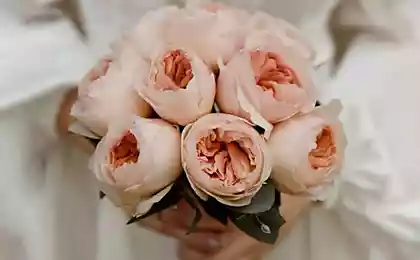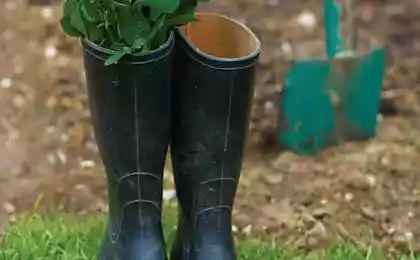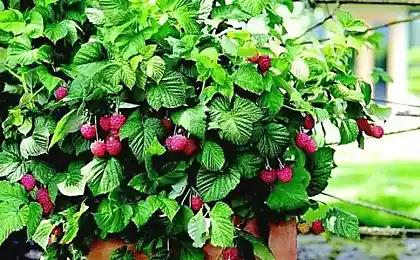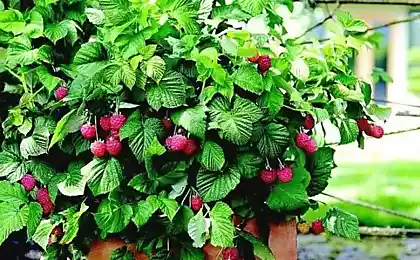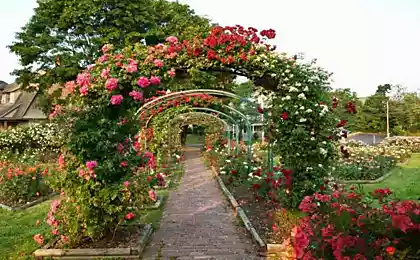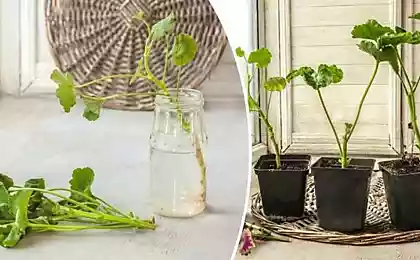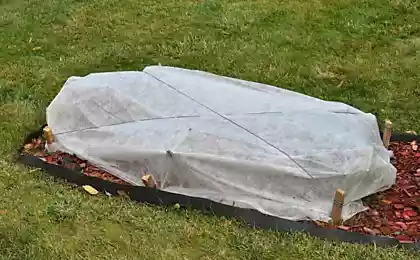611
Spring how to propagate roses by cuttings
Breeding of garden roses cuttings in the fall or spring is one of the most convenient ways to propagate ornamental culture with minimal cost. Spring cuttings is carried out in accordance with the technology of reproduction of flowering perennials and can be done at home.
Sixty one million six hundred seventy nine thousand one hundred twenty six
FEATURES GRAFTING AT HOME
Home cuttings of roses can be harvested from the autumn, and with chopped spring planting. The efficiency of such breeding roses largely depends on the varietal characteristics and group membership ornamental crops.
The easiest way rooted cutting obtained with climbing roses, floribunda, as well as cut with some varieties of hybrid tea roses. It is very difficult to hold rooting wrinkled garden roses and many varieties ultimatley roses.
Fifty one million five hundred eighty eight thousand seven hundred fifty seven
The easiest way rooted cutting obtained with climbing roses, floribunda
Woody, harvested in the autumn pruning process must be obtained from the plant has ceased active growth processes. Annual shoots cutting cuttings should be well-matured and smooth as possible, with a thickness of about 4-5 mm. Keep harvested from autumn cuttings can be in the cellar or in the ordinary household refrigerator, wrapped planting material in wet moss and plastic wrap.
In warm winters the aboveground part of the ornamental crops is well maintained and quite suitable for spring cutting on cuttings 10-12 cm in length, Sliced green or semilignified cuttings should be taken from healthy and well-developed parent bushes. To prevent high evaporation, the top foliage on the cuttings must be cut at least a third, and the lower leaves are removed completely. A quality handle needs to have at least two to three buds.
TECHNOLOGY HOME ROOTING
Most effective for rooting cuttings of roses in the home and need to provide planting material of sufficient lighting, temperature of air at +22-24C, moderate irrigation events and systematic spraying with water at room temperature. Cuttings of roses it is recommended to treat the solution of a special growth stimulants, which it is possible to use the "IAA", "Kornevin", as well as natural stimulants: aloe Vera juice or honey.
Sixty two million two hundred fifty five thousand three hundred twenty
The soil to plant the cuttings after the regrowth of the roots to a length of half an inch
Harvested in spring or autumn cuttings are allowed to root in several ways:
Rooting rose cuttings in soil assumes a sloping landing under banks
The soil to plant the cuttings after the regrowth of the roots to a length of half an inch. It should be remembered that the roots are very fragile and planting in the ground requires extreme caution. The soil around the roots formed to seal neatly. Glaze made with water at room temperature. Rearing is performed in a bright location protected from direct sunlight. As you increase the size of the root system of young plants, approximately three months after planting in the seedling container, rose may need to transplant into a flower pot of large size.
AS AND WHEN PLANTED IN THE GROUND
Young roses are grown by the method of propagation using time-containers can be planted in flower beds open ground, both in spring and autumn. However, spring planting is preferable, since in this case the plant gets the opportunity to settle down in a place of constant cultivation before the onset of winter frosts.
This feature of obuslovlennaya cuttings at the age of three to four months watery roots with a thick fibrous root system. This root system is very sensitive to excessive moisture and even slight frost and temperature changes. Rooted cuttings during the first autumn-winter season should be kept in the most favorable conditions for them.
Spring planting does not present difficulties even for novice gardeners-fans, but I assume the correct choice of plot:
Rooting cuttings of roses in water in water is also quite a valid option of breeding ornamental crops
It is best to place the seedlings of garden roses in well-warmed and sun plots with a slight slope to the South, South-West or South-East. The low-lying area required is drainage of the soil. It should be noted that when growing roses in regions with cold climate and short summer period, the planting shall be carried out in areas represented by soils with alkaline reaction.
Twenty eight million three hundred forty five thousand five hundred fifty seven
It is best to place the seedlings of garden roses in well-warmed and sun plots with a slight slope to the South, South-West or South-East
Rose cuttings
THE ADVANTAGES AND DISADVANTAGES OF SPRING GRAFTING
As with any method of propagation of ornamental perennial crops, cuttings of roses in the spring months has its advantages, and some disadvantages:
What to do if squeak hardwood floors
How to grow tomatoes without seedlings
Source: dachadecor.ru/posadka-i-uchod/technologiya-razmnozheniya-roz-cherenkami-vesnoy-v-domashnich-usloviyach
Sixty one million six hundred seventy nine thousand one hundred twenty six
FEATURES GRAFTING AT HOME
Home cuttings of roses can be harvested from the autumn, and with chopped spring planting. The efficiency of such breeding roses largely depends on the varietal characteristics and group membership ornamental crops.
The easiest way rooted cutting obtained with climbing roses, floribunda, as well as cut with some varieties of hybrid tea roses. It is very difficult to hold rooting wrinkled garden roses and many varieties ultimatley roses.
Fifty one million five hundred eighty eight thousand seven hundred fifty seven
The easiest way rooted cutting obtained with climbing roses, floribunda
Woody, harvested in the autumn pruning process must be obtained from the plant has ceased active growth processes. Annual shoots cutting cuttings should be well-matured and smooth as possible, with a thickness of about 4-5 mm. Keep harvested from autumn cuttings can be in the cellar or in the ordinary household refrigerator, wrapped planting material in wet moss and plastic wrap.
In warm winters the aboveground part of the ornamental crops is well maintained and quite suitable for spring cutting on cuttings 10-12 cm in length, Sliced green or semilignified cuttings should be taken from healthy and well-developed parent bushes. To prevent high evaporation, the top foliage on the cuttings must be cut at least a third, and the lower leaves are removed completely. A quality handle needs to have at least two to three buds.
TECHNOLOGY HOME ROOTING
Most effective for rooting cuttings of roses in the home and need to provide planting material of sufficient lighting, temperature of air at +22-24C, moderate irrigation events and systematic spraying with water at room temperature. Cuttings of roses it is recommended to treat the solution of a special growth stimulants, which it is possible to use the "IAA", "Kornevin", as well as natural stimulants: aloe Vera juice or honey.
Sixty two million two hundred fifty five thousand three hundred twenty
The soil to plant the cuttings after the regrowth of the roots to a length of half an inch
Harvested in spring or autumn cuttings are allowed to root in several ways:
- rooting rose cuttings in soil assumes a sloping landing under banks in flower pot filled with substrate based on peat and moss-sphagnum sand with the addition of fertile soil. Experienced growers recommend to sprinkle soil mix of coarse sand, in which is immersed the lower part of the stem to prevent rotting of planting material from excessive moisture. It is important to maintain optimal moisture, and once the kidneys will begin to move into growth, cupping the shelter is required to lift. Fully remove the cover after you plant to take root;
- rooting cuttings of roses in water is also quite a valid option of breeding ornamental crops. Water is best used to defend or boiled. In a container filled with water to immerse the treated stimulator of rooting of cuttings, then it is required to supply planting material in a room with moderate lighting. The water should be regularly replaced with fresh. After the appearance of roots, the cuttings must be planted in seedling containers with drainage holes filled with nutritious soil mixture.
Rooting rose cuttings in soil assumes a sloping landing under banks
The soil to plant the cuttings after the regrowth of the roots to a length of half an inch. It should be remembered that the roots are very fragile and planting in the ground requires extreme caution. The soil around the roots formed to seal neatly. Glaze made with water at room temperature. Rearing is performed in a bright location protected from direct sunlight. As you increase the size of the root system of young plants, approximately three months after planting in the seedling container, rose may need to transplant into a flower pot of large size.
AS AND WHEN PLANTED IN THE GROUND
Young roses are grown by the method of propagation using time-containers can be planted in flower beds open ground, both in spring and autumn. However, spring planting is preferable, since in this case the plant gets the opportunity to settle down in a place of constant cultivation before the onset of winter frosts.
This feature of obuslovlennaya cuttings at the age of three to four months watery roots with a thick fibrous root system. This root system is very sensitive to excessive moisture and even slight frost and temperature changes. Rooted cuttings during the first autumn-winter season should be kept in the most favorable conditions for them.
Spring planting does not present difficulties even for novice gardeners-fans, but I assume the correct choice of plot:
- the place should be well lit, especially in the first half of the day, in the period of intensive evaporation of moisture from leaves, thus reducing the risk of harm to ornamental plant fungal diseases;
- plant grown in areas with sufficient lighting, faster is formed, and forms a high number of flowers;
- when grown in shady areas, garden roses slow to grow and develop, and are too long, thin shoots, weak flowering and often target pathogenic microorganisms and plant pests;
- it is advisable to choose for landing areas, well protected from the negative impact of such adverse natural factors as drafts and wind, and also water stagnation or cold air masses;
- the soil should be represented not heavy loamy soils, rich in humus and easily permeable to air and water;
Rooting cuttings of roses in water in water is also quite a valid option of breeding ornamental crops
- the level of occurrence of ground water at the site must be located no closer than one metre to the root system of planted ornamental crops;
- to improve light, sandy and loamy-sandy soils will require the introduction of decomposed manure, humus, peat not acidic and lime;
- to make a heavy clay soil suitable for growing garden roses by pre-depositing coarse sand, humus, compost and peat;
- special attention should be paid to levels of acidity of soil on the site for planting, which should be at the level of pH is 6.0-6.5, so if you need to reduce acidity is to be paid wood ash or lime, and to increase the level of acidity of the peat or manure.
It is best to place the seedlings of garden roses in well-warmed and sun plots with a slight slope to the South, South-West or South-East. The low-lying area required is drainage of the soil. It should be noted that when growing roses in regions with cold climate and short summer period, the planting shall be carried out in areas represented by soils with alkaline reaction.
Twenty eight million three hundred forty five thousand five hundred fifty seven
It is best to place the seedlings of garden roses in well-warmed and sun plots with a slight slope to the South, South-West or South-East
Rose cuttings
THE ADVANTAGES AND DISADVANTAGES OF SPRING GRAFTING
As with any method of propagation of ornamental perennial crops, cuttings of roses in the spring months has its advantages, and some disadvantages:
- the resulting plants are not prone to the formation of root seedlings, so largely simplified care practices;
- in the southern regions such own-rooted plants overwinter well and even freezing the aerial part able to recover from dormant root buds;
- as planting material, you can use the cuttings obtained as garden plants and cut shoots bouquet of roses.
What to do if squeak hardwood floors
How to grow tomatoes without seedlings
Source: dachadecor.ru/posadka-i-uchod/technologiya-razmnozheniya-roz-cherenkami-vesnoy-v-domashnich-usloviyach





